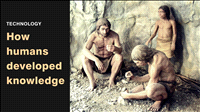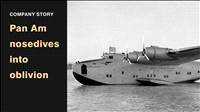History of the telephone | Telephone invention | Evolution of telephone
By Kiron Kasbekar | 01 Apr 2023
I am going to talk about the history of telephones.
Nowwww … can you imagine life without your phones? Or your mobile phones?
Older people who lived and worked in the times before mobile phones came on the scene would shudder and protest if you asked them whether they’d like to go back to a world without telephones.
And everyone else, those who were born in the 1990s and later, who grew up with mobile phones around them, would find it difficult to imagine a world without mobile phones.
In India, where telephones had reached just 1.2 per cent of the population in the mid-1990s, most people would not even have seen an older landline phone until the public booths and public call offices came up.
But before I start on all that, one request.
I hope you’ve seen our earlier videos and liked them. If so, please subscribe to this channel – if you’ve not done so already.
Do also click on the ‘like’ button below. And please share this link with your friends.
One other thing I’d like to mention here. And that is Informachine – a business news monitoring system that gets you content from your selection from thousands of business websites we have listed there. Websites on companies, on industries, on technology, on management and marketing, and national and international news in general.
It saves you hours of grind and toil. Because you can ask Informachine to bring you exactly what you need, and not waste your time with all kinds of clutter and junk, as happens when you do web searches.
And it’s free of cost! The link is given in the description below.
OK. Back to today’s video. I hope you watch it completely.
As I was saying earlier, the telephone made a world of difference in connecting people with one another. But it took nearly six to eight decades, after its invention, for most people in North America and Western Europe to get telephones in their offices and homes. Meaning, some years after the end of the Second World War. In other regions of the world, it took much longer still.
Telephones are a great help. But when they did arrive on the market, they were far from the convenience we find today.
There were two major differences compared with what we have today:
One, at first, telephone instruments started out big and clumsy. I will show you pictures of some of those old phones a little later, and you will see what I am talking about.
They were fixed to a wall or a desk – and, can you imagine? – They didn’t have a dial! You had to seek the assistance of an operator to connect you with whoever you wished to talk to.
It worked the way trunk calls used to be made for a long time afterwards. You couldn’t make a long-distance call without the help of an operator at the telephone exchange. The same thing applied to local calls earlier.
And what about now? Now you can tuck your phone into your back pocket, and you don’t need anybody’s help to use them to talk to anyone.
Oh yes, and you can talk to more than one person at the same time!
And, two, you can do so many things with your mobile phones you couldn’t imagine doing with your old land line phones – such as take photographs, listen to music, watch videos, book a taxi, make and receive payments … and so many other things, I’ve lost track of them.
In the beginning, when phones began to be used, in the late 19th century, and for quite some time afterwards, all you could do with phones was talk (and listen, of course). And that too with some trouble, after requesting an operator to connect you with whoever you wished to talk to.
You may have seen it in old movies – you had to depend on a telephone company operator, sitting in a telephone exchange building, streets away or at the other end of the city, with roomful of other operators.
It took you a little while to get a response from an operator, only to be asked to wait a while because ‘all lines were busy’. That would get repeated a few times if you tried the operator again.
Then, the operator who would be literally juggling lines, pulling one plug out of one socket and inserting it into another, and would connect you with whoever you wished to talk to. Finally. When the lines were free.
I bet people improved their vocabulary of swear words as they waited impatiently!
Think about this scene in a movie about those days. A nervous heroine stands before a wall-mounted phone in a hotel lobby, jiggles the phone cradle to draw an operator’s attention, and, when the operator comes on-line, she asks her to get John Carter (or whoever), the hero, on the line. “And quickly,” she adds, turning to look behind her to see if the villain is around. John is on the line in a jiffy, and she starts talking to him, watching the villain and two other gangsters enter the hotel... suspense.
Now in the movies the operator comes on the line immediately. In real life that never happens. People had to wait until some operator managed to find a free line to be able to connect them. The process could be extremely tiresome. The gangsters would have got to the terrified woman before the operator was able to connect her with her hero!
But this is a scenario that came decades after the invention of the telephone. The first phones were much more primitive.
In 1876 Alexander Graham Bell became the first person to be granted a United States patent for a device that conveyed a clearly intelligible replication of the human voice from one device to another. That’s how it was called. The ‘device’ as it was referred to generically in the patent application, was what became known as a telephone.
There is some controversy around this topic. It seems that Italian immigrant Antonio Meucci began the process of developing the telephone's design in 1849, which was 27 years before Bell was credited with the invention. Meucci announced he had invented the telephone, but due to a lack of funds, he wasn't able to complete the project.
Well before that, Frenchman Charles Bourseul became one of the first people to theorize about the transmission of voice signals, and attempted to build a device well before Bell made his telephone, but the receiver he created never successfully converted signals back to clear sound.
Then there was another man, a college professor named Elisha Gray, who announced that he had invented the telephone's design – on the same day as Bell did so.
So who got the patent? Neither Gray nor Bell attended the patent office. Their lawyers did.
The story goes that on 14 February 1876, Bell's lawyer reached the office first and was therefore awarded the patent for the design. On the other hand, there are counterclaims there was some hanky-panky in the award of the patent to Bell.
Well, what can I say? There is no way I can confirm or refute this story, and maybe we should just leave it there. This video is about the telephone, not about Bell, Meucci or Gray. As it happened, Bell was able to persuade financiers to back his venture, what we’d now call a start-up venture. And the process continued.
Let’s see the initial stages. The picture you see here is one of Alexander Graham Bell’s first telephone models.
Recognize this? This was one of the types of phones we had back in the 1950s.
And there was this, many decades earlier.
But this too was not what a telephone looked like when Alexander Graham Bell invented it back in 1876.
Odd. Right? But definitely an improvement over this one.
Bell’s first phone. It looked like this!
Then came some improvements, and you can see them being demonstrated by an actor in a 1926 silent movie. The picture shows Bell's first telephone transmitter (called a microphone!), invented in 1876 and first displayed at the Centennial Exposition in Philadelphia.
Some of the reactions to the very idea of a telephone seem utterly hilarious today. In 1876, a year before he became President of the United States, Rutherford B. Hayes saw the telephone for the first time, and said this to Alexander Graham Bell:
“That’s an amazing invention, but who would ever want to use one of them?”
Anyway, Bell managed to start the business. But soon he needed more funds. He wasn’t able to arrange enough funds to expand the business quickly.
So, in 1876, he and G. G. Hubbard, president of the Bell Telephone Company, offered to sell Bell’s telephone patent to Western Union, a major telegraph company, for $100,000 because Bell and Hubbard were unable to raise enough funds to sustain the business.
Western Union appointed a committee to study the offer. Now listen to what the committee said in its report:
‘We do not see that this device will be ever capable of sending recognizable speech over a distance of several miles. Messer Hubbard and Bell want to install one of their ‘telephone devices’ in every city. The idea is idiotic on the face of it.
‘Furthermore, why would any person want to use this ungainly and impractical device when he can send a messenger to the telegraph office and have a clear written message sent to any large city in the United States? …
‘Mr. G.G. Hubbard’s fanciful predictions, while they sound rosy, are based on wild-eyed imagination and lack of understanding of the technical and economic facts of the situation, and a posture of ignoring the obvious limitations of his device, which is hardly more than a toy … This device is inherently of no use to us. We do not recommend its purchase.’
In Britain too the invention was received with some skepticism, but for another reason, which is equally laughable today. Listen to this comment made by William Preece, chief engineer at the British Post Office, in 1878:
There are conditions in America which necessitate the use of such instruments more than here. Here we have a superabundance of messengers, errand boys and things of that kind … The absence of servants has compelled America to adopt communications systems for domestic purposes.
But at least one other person was much more far-sighted. Kate Field, a British reporter who knew Bell, predicted in 1878 that eventually ‘While two persons, hundreds of miles apart, are talking together, they will actually see each other.’ Wow! She was able to visualize video communications a century before it became reality!
Now if you see what the telephones did in those early days, you might say that Western Union’s skepticism seemed sensible.
See how the system worked then.
The first telephones were connected directly to one another. So if you happened to be lucky to own a phone those days, you’d have a phone in your office that was connected to an important customer. And a second phone connected to another important customer. And these gentlemen would only be able to use those phones to talk to you and to no one else. To talk to others they would need additional instruments.
If you wanted to be in touch with your home, then you’d need another phone and another line. And more phones and more lines for every additional customer or relative you wished to be in regular touch with.
Clearly, such a system was not practical beyond a very few users. So, soon afterwards, it was then replaced by manually operated switchboards located in an exchange building.
If you stop to think about it, even that, the switchboard, was a very important step in the history of communications.
After that, several exchanges were connected together, and then an automated, worldwide public switched telephone network was put in place.
Anyway, by 1877-78 the first telephone line was laid, the first switchboard was created and the first telephone exchange became operational.
Soon the telephone began to become a vital part of business and government communication. It took much longer for it to penetrate households.
The Bell telephone system expanded rapidly, from 600,000 phones in 1900 to 2.2 million by 1905, and to 5.8 million by 1910.
In 1915 transcontinental telephone lines were laid and became operational.
In the West, things improved dramatically after the Second World War.
By 1948, the 30 millionth phone was connected in America.
As many as 61.8 per cent of households had telephones in 1950 in America, up from 35 per cent in 1920, and 40.9 per cent in 1930. The percentage grew to 78.3 per cent in 1960, and 90.5 per cent in 1970. By the year 2000, 97.6 per cent of American households had telephones.
To look at it another way, by the 1960s, there were more than 80 million phone lines in America, and 160 million in the world. By 1980, there were more than 175 million telephone subscriber lines in America, which by then had a population of 227 million people.
I should add something here. Sometime in the middle of the-20th century, mobileradio systems began to be used when you needed to communicate from moving vehicles, such as cars and ships. These systems came decades before today’s mobile phones, but as you can imagine, they were not very common.
In the developing world telephones took a much longer time reaching offices or homes. In India, which had been deeply impoverished by colonial rule, the government lacked resources, and the vast majority of people didn’t have access to any phone right until the 21st century.
The penetration of telephones in India was a pathetic 1.2 per cent until mobile phones came on the scene in the mid-1990s. Meaning that hardly anybody in the country had a phone.
If you wished to communicate with someone urgently, you had to send them a telegram, which you hoped would get delivered soon that day, but sometimes took a day or two if the destination was another city or small town.
I am sure many of our viewers have not even seen what telegrams look like. They have become yet another item for the museum. But they were a common thing in the past.
Anyway, while most individuals didn’t have access to a telephone, companies were a little better off. They would also use telex machines to communicate. Bigger companies managed to get telephones, for which there used to be a long waiting line.
It took years to get a phone after you applied for one. Most small firms had to make do without phones. Pleading with neighbors for the use of their phone was common practice.
Then mobile phones were launched in 1995.
But let me go back a bit.
In 1973, Martin Cooper, head of the communications systems division at Motorola, and inventor of the first hand-held cellular mobile phone, became the first person to make a mobile phone call.
The cell phone idea had been around since 1947. But it took 26 years for it to become reality. And some more years for the product to prove successful.
Cooper made the first cellular call in 1973, using Motorola’s DynaTAC handset. That handset went into limbo, and a new version was launched a decade later.
In 1983, Cooper showed off the Motorola DynaTAC 8000x mobile phone to a group of journalists at the Manhattan Hilton. It weighed over two and a half pounds (or 1.1 kg).
And it was aptly nicknamed ‘the brick’. A building brick weighs about 4 pounds, and if you have ever hefted a brick, you will know it’s not a light weight. Now something that was more than half a brick would also be heavy, and that was how much the first mobile phones weighed.
Just take a look at the photograph.
Anyway, to prove at the press meet in 1983 that the phone was not a fake, Cooper handed it around. One journalist called her mother in Australia, half expecting not to hear anything. Or maybe hear some music. To her surprise, she heard her mother’s voice from the plastic device!
That, of course, did not mean that everyone would rush to buy it. When the DynaTAC 8000x was launched, it cost a hefty $3,995. Not so much? Think again. In today’s prices, that would be over $12,000, or around Rs.10 lakh, that is, one million rupees!
I, for one, would never have purchased such a phone. I had all the land line phones I needed. At home and in the office.
But the Motorola phone paved the way for the mobile revolution.
In the US, the first digital cellular network went online in Orlando, Florida in 1993.
The impetus for change in Indian telecommunications was created in 1981 with plans for rapid expansion of the sector. Prime Minister Indira Gandhi signed contracts with French company Alcatel, then one of the biggest telecom companies in the world, to launch a production facility to manufacture 5,000,000 lines per year. That would have kick-started the telecom revolution for India. But the plan met with political opposition, and was stalled.
Rajiv Gandhi, who became Prime Minister after Indira Gandhi was assassinated, continued with attempts to liberalize the telecommunications sector, invited Sam Pitroda, a US-based non-resident Indian who holds a hundred technology patents, to set up a Centre for Development of Telematics (C-DOT). This organization began to manufacture electronic telephone exchanges in India for the first time.
Political opposition apart, it would have taken ages for Pitroda’s team to roll out a plan that would bring telephones to a significant section of the Indian population. Remember, the early 1980s were times when telephone connections meant landline connections.
Mobile phones had not yet arrived on the scene. The laying of telecom cables from the main exchanges to local stations and to the final user was a labor-intensive and time-consuming process.
So they came up with the idea of building a network of public booths across the country. Shopkeepers across the country were encouraged to install such public phones at what came to be known as PCOs (short for public call offices). They were really booths rather than offices, but the name PCO stuck.
The decentralization meant the system was up and running reasonably quickly. The shopkeepers in whose premises the phones were installed took care of the safety of the system and alerted the telephone company if there was a problem.
The result was that tens of thousands of such booths were created very quickly, and people who had never before dreamt of getting easy access to a phone were able to use the service at a very low cost.
As of 2006 there were about 4.2 million such PCOs operating in India, according to the Telecom Regulatory Authority of India.
Still, progress of landlines for phones in offices, shops and homes was slow. The speed picked up with the launch of mobile telephony along with addition of more land lines. So the sector saw really rapid growth after 1997, when mobile phones began to be used.
At first mobile phones were so expensive that very few people could afford them.
The first mobile phone service in India was launched on 22 August 1994.
And can you imagine the costs? A mobile handset cost a whopping Rs. 45,000, for a device that could only be used to make and receive calls and the charges for calling were Rs. 17 per minute. Initially, the person who was called also had to pay a charge, which was around Rs.10 per minute.
Can you imagine that? Very few people could afford to pay such rates. So the service did not grow much initially. The phones were seen more as a business tool than a personal convenience. And even for businesses they seemed like a luxury, to be used very sparingly.
Gradually, costs were reduced, and things changed. Dramatically.
In 2002, only 10% of the world's population used mobile phones and by 2005 that percentage had risen to 46%. By the end of 2009, there were a total of nearly 6 billion mobile and fixed-line telephone subscribers worldwide. This included 1.26 billion fixed-line subscribers and 4.6 billion mobile subscribers.
In India, starting from a subscriber base of 14.88 million users in March 1997, the total number of telephone subscribers (meaning both landline and mobile phone subscribers) in India grew to over 1.15 billion by December, 2016.
Today India has the second-highest number of mobile phone users after China. On 31 January 2021, the Indian network had 1,179.49 million subscribers, for both fixed and mobile phones.
What happened? The cost of calls has dropped to a negligible amount, and once people subscribe to a service, they can make and receive calls for an unlimited amount of time. That’s what happened.
To sum up, about two hundred years ago, the telegraph made it possible for people to communicate over great distances for the first time in human history. Soon the use of the telegraph was partly supplanted by the use of radio communication.
And as that was happening, along came the telephone, which quickly became the fastest way for person-to-person communication.
Then, as we saw, telephones changed shapes and added functions, and became more widely used across the world than the original inventors of the telephone might ever have imagined.
Today you can do things with your mobile phone you couldn’t imagine doing with your old land line phones – take photographs, listen to music, watch videos, book a taxi, make and receive payments … and so many other things.




























